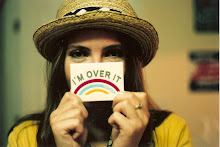
http://en.wikipedia.org/wiki/Color_temperature
Color Temperature
Color temperature is a characteristic of visible light that has important applications in lighting, photography, videography, publishing, and other fields. The color temperature of a light source is determined by comparing its chromaticity with that of an ideal black-body radiator. The temperature (usually measured in kelvin (K)) at which the heated black-body radiator matches the color of the light source is that source's color temperature; for a black body source, it is directly related to Planck's law. Yellow-red colors are considered warm, and blue-green colors are considered cool. Confusingly, higher Kelvin temperatures (3600–5500 K) are considered cool and lower color temperatures (2700–3000 K) are considered warm. Cool light produces higher contrast and is considered better for visual tasks. Warm light is preferred for living spaces because it is considered more flattering to skin tones and clothing. Color temperatures in the 2700–3600 K range is recommended for most general indoor and task lighting.[citation needed]
What can you observe in the dark?
smell
texture
temp.
firmness
sounds it makes
what can be removed
what parts make up the whole
Light & Shadow
light wraps around edges
further away from a building or surface the fuzzier the shadow
focusing the light depends on proportion/ correct distance from the surface
A= Aperture
S= Shutter
B= Blub
P= Program
M= Manual
A-Dep.=
ISO= International Standard o
Elements of Photography
Light
Color
Cropping
Texture
Unity/ Grouping
Shape
Direction
Scale
Focus/Selective Focus. Depth of Field/ long and Short
Vantage Point
Line
Contrast: High and Low, Subject matter
HW: Photograph all elements and define previous words, bring camera with cable
"The world is boring, because you let it be."
